CALLISTO Spectrograms
Click here for near real-time spectrograms for Reeve Observatory, Anchorage, Alaska USA
Example Spectrograms. The date is shown in filename. The time is shown along the horizontal axis. The spectrograms shown here were made with a sub-optimum system setup.
March 2011
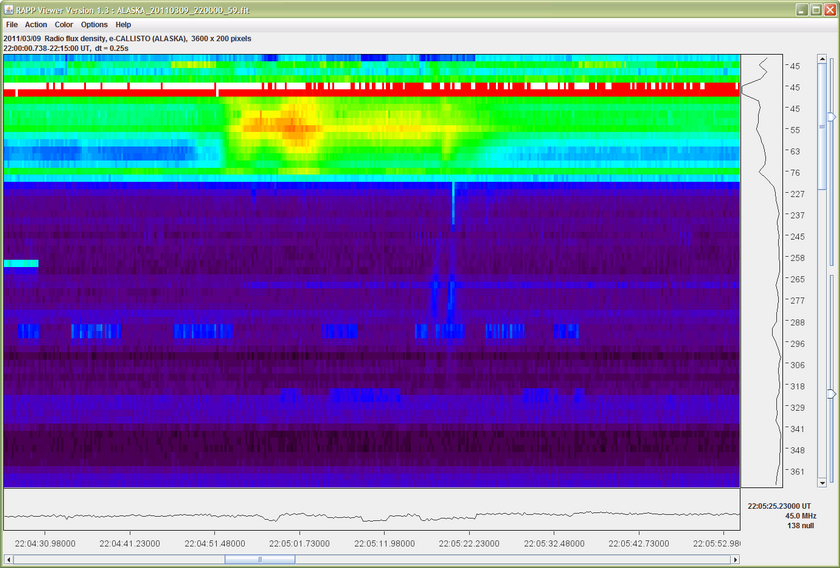



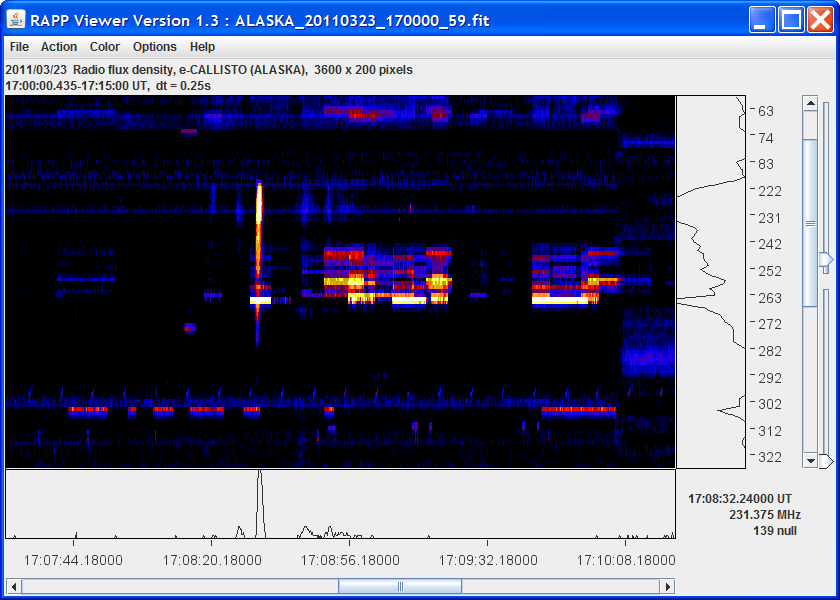






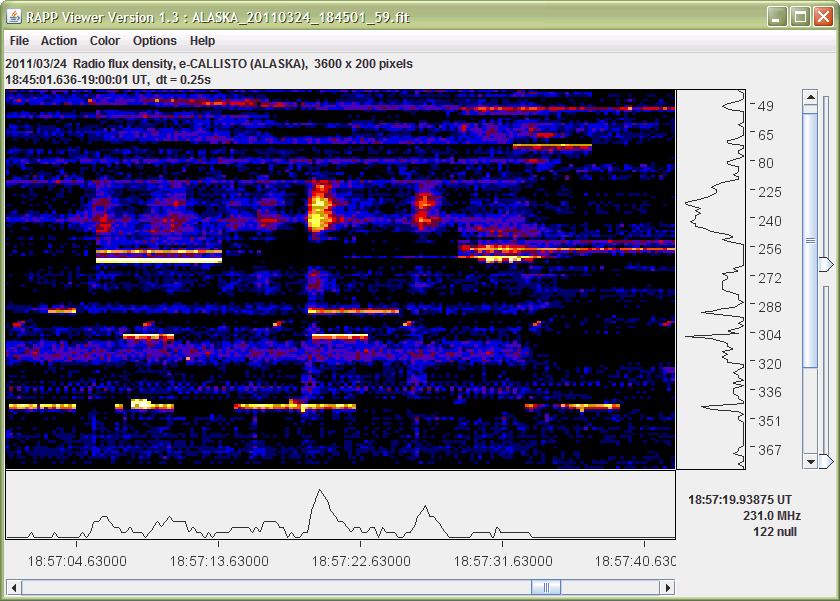






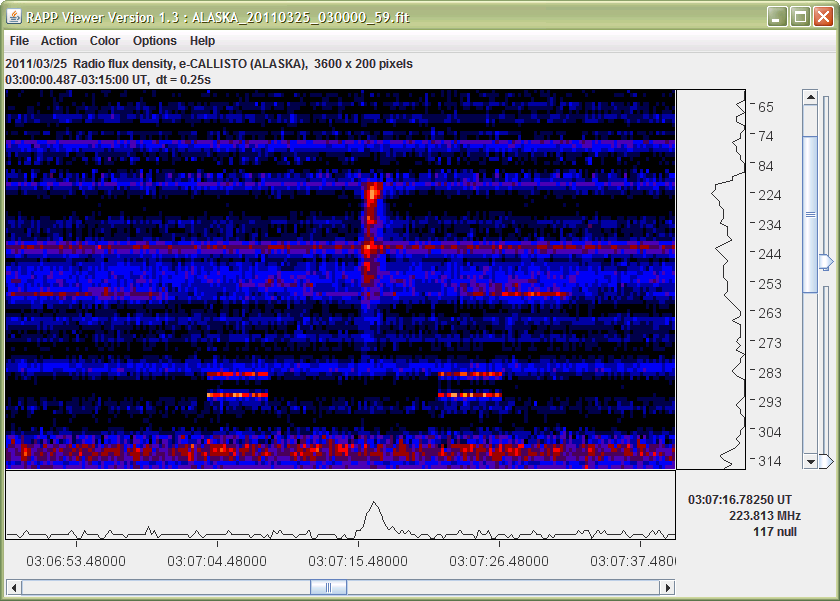



May 2011:
The following two spectrograms show weak Type III solar emissions at 0237:49 and 0238:16 on 17 May. The first spectrogram was taken from an 8-bit e-CALLISTO receiver and the second from a 10-bit CALLISTO Receiver connected to the same antenna through a splitter.

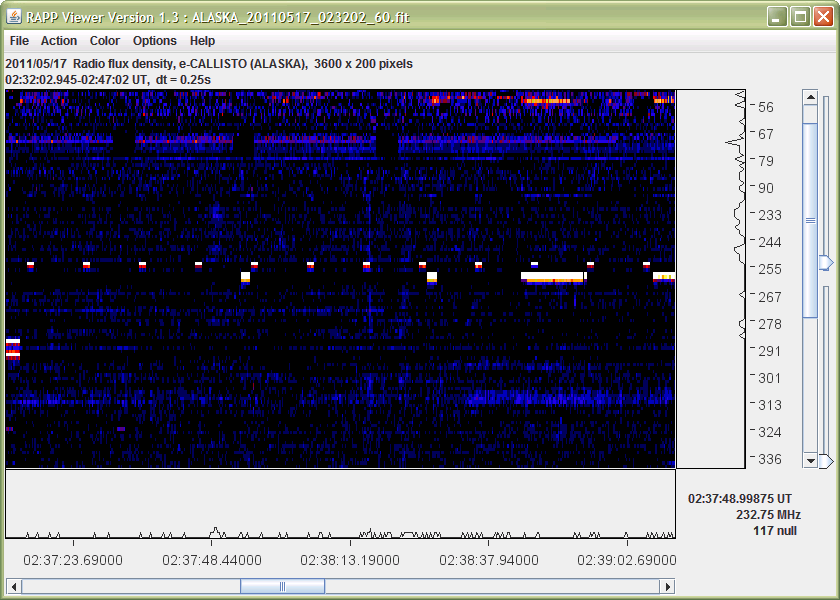
August 2011:
M9.3 Flare Event on 4 August 2011 near 0356 UTC. Space Weather Prediction Center reported Type II and Type III Radio Emissions with this event

M3.5 Flare Event on 8 August 2011 near 1804 UTC. Space Weather Prediction Center reported Type II Radio Emissions with this event

M5.3 Flare Event on 6 September 2011 near 0146 UTC. Space Weather Prediction Center reported Type II Radio Emissions with this event. The blank band in the approximate frequency range 90 ~ 110 MHz is due to heavy notch filtering in the RF path to eliminate intermodulation and image frequencies from VHF-FM broadcast transmitters. The blank band in the approximate range 170 ~ 190 MHz is due to colorization settings of the viewer and the small number of frequencies monitored in that band.

X2.1 Flare Event on 6 September 2011 near 2220 UTC

X2.1 Flare Event, same as above but with different viewer showing features at 2222:43.

X1.8 Flare Event on 7 September 2011 near 2238 UTC.

Solar Flare Event on 7 September 2011 indicated from about 2314 to 2321 UTC. This event crossed the 15 minute data file boundary so is shown in two images below.


Solar Flare Event recorded by Receiver serial number NA001 on 12 December 2011. Activity is indicated from about 2001 to 2002 UTC over a frequency range of 217 to 418 MHz. This event was reported by Space Weather Prediction Center with peak flux of 1100 solar flux units.
